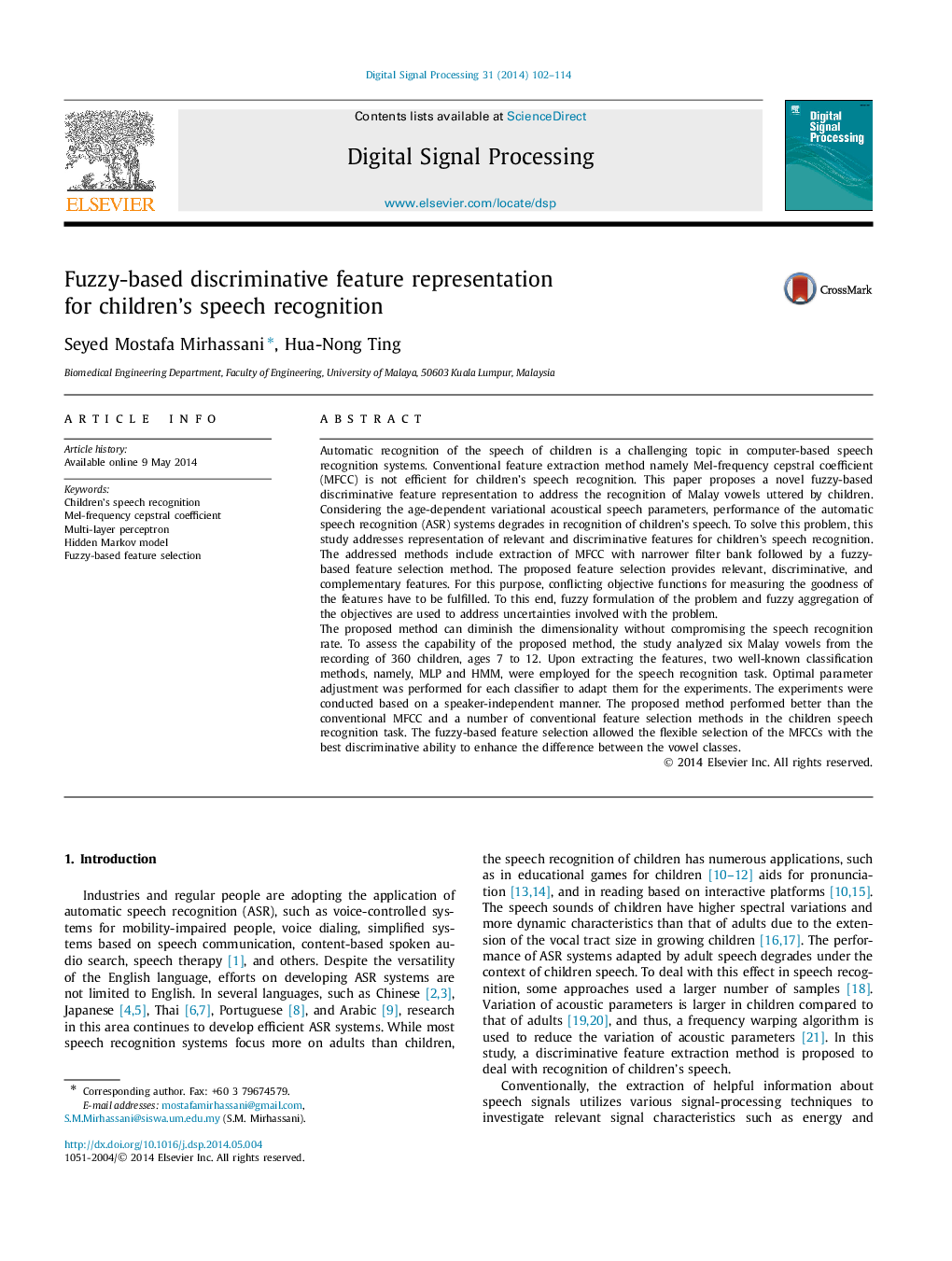| کد مقاله | کد نشریه | سال انتشار | مقاله انگلیسی | نسخه تمام متن |
|---|---|---|---|---|
| 564695 | 1451749 | 2014 | 13 صفحه PDF | دانلود رایگان |
• A novel fuzzy-based discriminative feature selection was proposed.
• The proposed method enhanced discriminative ability of the cepstral features.
• HMM and MLP classifiers were adopted based on parameter selection.
• New arrangement of static, delta and delta–delta cepstral coefficient was obtained.
• The features outperformed the conventional MFCCs in children's speech recognition.
Automatic recognition of the speech of children is a challenging topic in computer-based speech recognition systems. Conventional feature extraction method namely Mel-frequency cepstral coefficient (MFCC) is not efficient for children's speech recognition. This paper proposes a novel fuzzy-based discriminative feature representation to address the recognition of Malay vowels uttered by children. Considering the age-dependent variational acoustical speech parameters, performance of the automatic speech recognition (ASR) systems degrades in recognition of children's speech. To solve this problem, this study addresses representation of relevant and discriminative features for children's speech recognition. The addressed methods include extraction of MFCC with narrower filter bank followed by a fuzzy-based feature selection method. The proposed feature selection provides relevant, discriminative, and complementary features. For this purpose, conflicting objective functions for measuring the goodness of the features have to be fulfilled. To this end, fuzzy formulation of the problem and fuzzy aggregation of the objectives are used to address uncertainties involved with the problem.The proposed method can diminish the dimensionality without compromising the speech recognition rate. To assess the capability of the proposed method, the study analyzed six Malay vowels from the recording of 360 children, ages 7 to 12. Upon extracting the features, two well-known classification methods, namely, MLP and HMM, were employed for the speech recognition task. Optimal parameter adjustment was performed for each classifier to adapt them for the experiments. The experiments were conducted based on a speaker-independent manner. The proposed method performed better than the conventional MFCC and a number of conventional feature selection methods in the children speech recognition task. The fuzzy-based feature selection allowed the flexible selection of the MFCCs with the best discriminative ability to enhance the difference between the vowel classes.
Journal: Digital Signal Processing - Volume 31, August 2014, Pages 102–114
